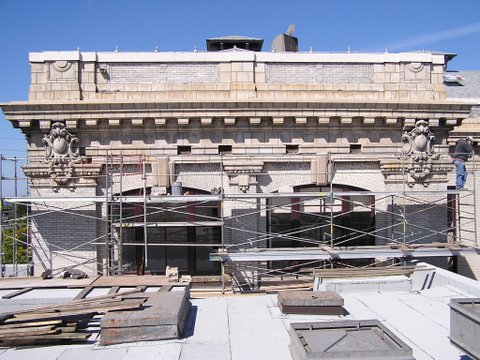Many historic preservation, restoration, renovation, and/or adaptive reuse projects require the analysis of existing building materials. This could be to meet demands for repair treatments, ensure energy performance targets, or research the history and authenticity of a building or site (amongst many others). Projects often call for advanced analytic techniques such as infrared thermography, RILEM tube water absorption, acid-dissolution of mortar, petrography, x-ray diffraction, and a plethora of other scientific tests to ensure a proper understanding of the chemical and physical properties of the existing building materials. These tests are often costly and time-consuming. For these reasons, many projects rely on results from a single test, or a small handful of tests. This begs the question, are the results from a few analytical or forensic tests representative of the entire building (either in its performance or historical characteristics)?

HISTORIC BUILDING MATERIAL PROPERTIES
Historic buildings present unique challenges. Unlike modern construction, historic buildings were built in a time without the same levels of standardization and mass-production that we see today. Home Depot was not a thing yet, and in its place, contractors were reliant on local hardware stores or local/regional distribution sources for building materials. In many cases, they made their own! As a result, when analyzing historic buildings today, the material properties are generally unknown and undocumented.
TIME AND THE ELEMENTS
Adding to the unknown is the process of time. Mother nature and the elements are a continuous impact – weathering historic buildings and changing the chemical and physical nature of extant materials. Different parts of a building will also weather at different rates, depending on several variables such as orientation, exposure, occupation, micro-climates, site and neighboring elements, water migration, and so on. There is also a good chance that over the years many repairs have been made, creating a patchwork of different materials. This creates buildings with highly varying characteristics and performance when measured in-situ.
Written by Daniel Castele, Designer and Conservator.
